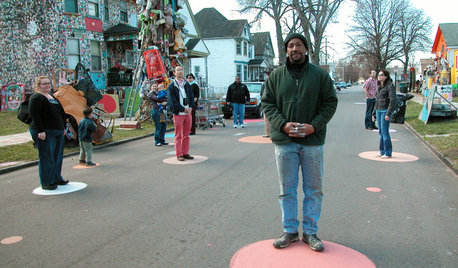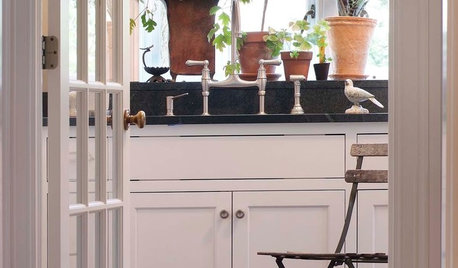New house & need help
suzygardener
14 years ago
Related Stories

FUN HOUZZDecorated Houses Help Save a Detroit Neighborhood
Art's a start for an inner-city community working to stave off urban blight and kindle a renaissance
Full Story
HEALTHY HOMEDecorate With Intention: Let Your House Help You De-Stress
Break free of automatic TV time and learn how to really unwind and recharge with these easy ideas that don't cost a dime
Full Story
SELLING YOUR HOUSE10 Tricks to Help Your Bathroom Sell Your House
As with the kitchen, the bathroom is always a high priority for home buyers. Here’s how to showcase your bathroom so it looks its best
Full Story
SELLING YOUR HOUSEHelp for Selling Your Home Faster — and Maybe for More
Prep your home properly before you put it on the market. Learn what tasks are worth the money and the best pros for the jobs
Full Story
SELLING YOUR HOUSE5 Savvy Fixes to Help Your Home Sell
Get the maximum return on your spruce-up dollars by putting your money in the areas buyers care most about
Full Story
DECLUTTERINGDownsizing Help: Choosing What Furniture to Leave Behind
What to take, what to buy, how to make your favorite furniture fit ... get some answers from a homeowner who scaled way down
Full Story
SELLING YOUR HOUSE10 Low-Cost Tweaks to Help Your Home Sell
Put these inexpensive but invaluable fixes on your to-do list before you put your home on the market
Full Story
DECLUTTERINGDownsizing Help: How to Edit Your Belongings
Learn what to take and what to toss if you're moving to a smaller home
Full Story
DECLUTTERINGDownsizing Help: How to Get Rid of Your Extra Stuff
Sell, consign, donate? We walk you through the options so you can sail through scaling down
Full Story
ARCHITECTUREHouse-Hunting Help: If You Could Pick Your Home Style ...
Love an open layout? Steer clear of Victorians. Hate stairs? Sidle up to a ranch. Whatever home you're looking for, this guide can help
Full StorySponsored






rhizo_1 (North AL) zone 7
catbird
Related Professionals
North New Hyde Park Landscape Architects & Landscape Designers · Taylorsville Landscape Architects & Landscape Designers · Surprise Landscape Contractors · Hickory Hills Landscape Contractors · Homewood Landscape Contractors · Lakeville Landscape Contractors · Shaker Heights Landscape Contractors · Suisun City Landscape Contractors · Norwood Stone, Pavers & Concrete · Tysons Corner Stone, Pavers & Concrete · Lincoln Siding & Exteriors · Cherry Hill Siding & Exteriors · Ft Washington Siding & Exteriors · Kennewick Siding & Exteriors · Wilmington Siding & Exteriorsmadabouteu
suzygardenerOriginal Author
rhizo_1 (North AL) zone 7
jim_in_huntsville_al
catbird